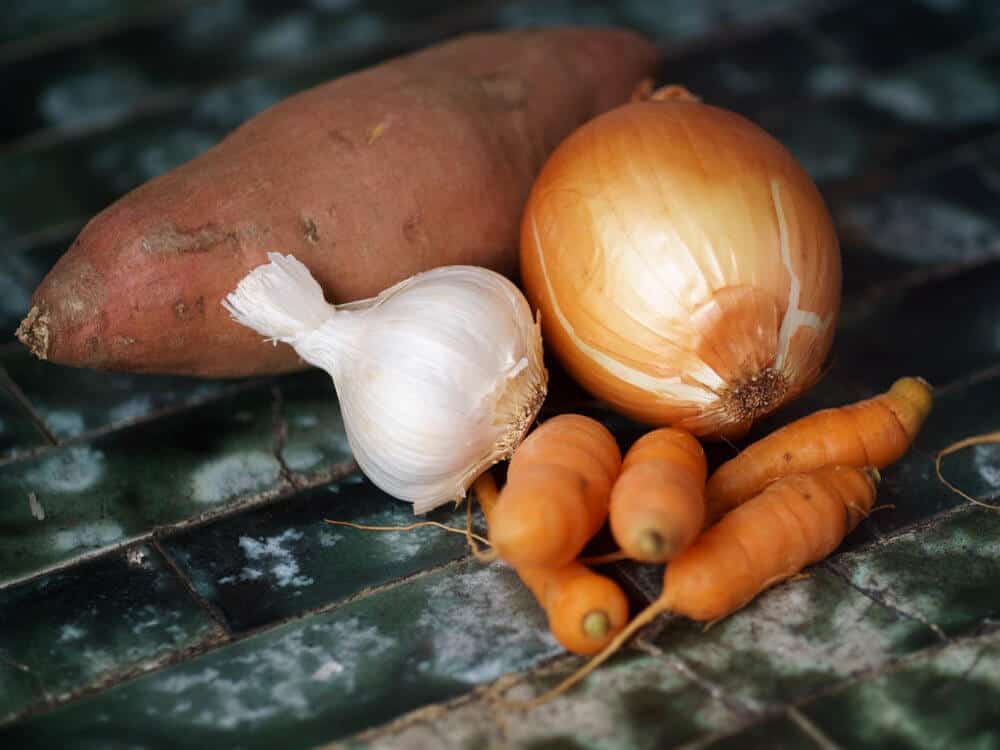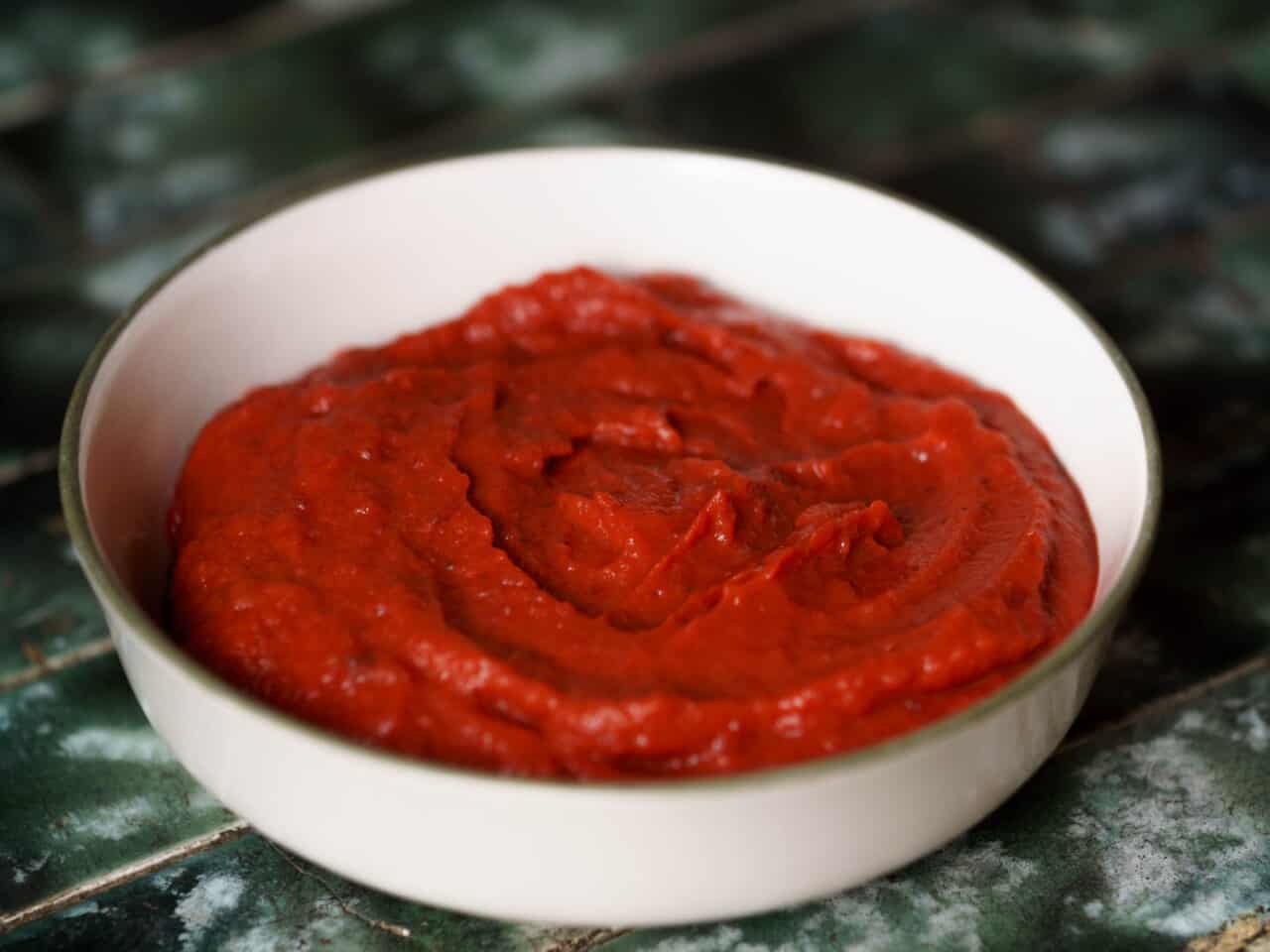Tomatoes, so plentiful at the market late summer and fall, are now out of season. Perhaps you canned or froze some for the winter. If not, read on for a substitute tomato sauce made from vegetables that are in season.

The impetus for this recipe was not seasonal necessity, I confess, but because of dietary restrictions. I am, sadly, not tolerating nightshades right now. Nightshades, or Solanaceae, are a large family of plants found all over the world that are both wild and also have important commercial value, whether ornamental flowers, food, medicine, or tobacco products. Unfortunately the various alkaloids in nightshades can trigger reactions in sensitive individuals. Some nightshades, such as belladonna or even green potatoes, have enough toxins to cause death.
Most plants do not want to be eaten, and so they produce a variety of defenses to reduce the number of animals or insects eating them. Animals and humans both have various adaptations to help them around these defenses. Most animals have biological adaptations, while people look to breeding and preparation techniques. Our garden vegetables have to be more carefully raised than wild versions of the same plants, but the general result is that we have a much more palatable and less dangerous food product.
But what happens when new varieties or preparation techniques are not enough? There’s increased awareness of dietary issues, and also increased options for alternatives. The simplest way to avoid problems with nightshades is to not eat them. What about those times when you want to make a favorite recipe for pizza, pasta, or other beloved food? The internet via Pinterest comes to the rescue!
I am not a fan of fake or replacement foods, but this sauce is simply a purée of real foods chosen for their flavor and also their colors. And they are currently available at market! They are nutritional powerhouses in their own right, too: onions, garlic, carrots, sweet potatoes, squash, and beets. I prefer sweet potatoes to squash in the “nomato” recipes that I’ve tried so far, but either one or a combination can be used. The other ingredients can be adjusted to suit your taste and visual preference as well. Sometime I’d like to try red carrots, for instance, to see how that affects the color. I’d also like to try different varieties of squash or alliums to see how they affect the flavor.
An additional ingredient that’s helpful is some sort of acid, like lemon juice, red wine vinegar, or red wine. Tomatoes, especially heirloom varieties, are acidic, and adding one or more acidic liquids can balance the earthy and sweet flavors of the root veggies while mimicking tomato’s flavor. Red wine or citrus juices such as lemon or lime are also common additions to tomato sauces such as pasta sauce or salsa, so their flavors are familiar in such recipes.
This sauce can be used anywhere you might use canned tomatoes or sauce, though the amounts and texture will differ from the tomatoes. Add Italian herbs for a pasta or pizza sauce, for example. I used this sauce for a family favorite salmon stew recipe that I was unsure how to replicate otherwise. It was great and the leftovers did not stick around long!
Basic Nomato Sauce
Adapted from The Ultimate Nomato Sauce by Southern in Law with inspiration from Shockingly Delicious’s No-Mato Sauce
Makes ~ 3 cups
1 medium onion, chopped
4 cloves garlic, crushed
1 tbsp butter or oil
4 large carrots, peeled and chopped into chunks
3/4 cup pumpkin, squash, or sweet potato, peeled and cubed
2 medium beets, cooked, peeled, and chopped
1 1/2 cups vegetable stock
1-2 tablespoons red wine or red wine vinegar
1-3 tablespoons of lemon juice
Salt and pepper
- In a large saucepan, saute your onions, garlic, carrot, and squash or sweet potato in your butter/oil until translucent. Salt to taste. Brown if desired.
- Add stock and bring to a boil before reducing to a simmer. Cook until your veggies are soft.
- Once your veggies are soft, blend them until your nomato sauce reaches your desired consistency, seasoning to taste. Add beets to the mix a little at a time, blending until the desired consistency is reached. Add lemon juice, red wine/vinegar, salt, and pepper to taste.
- Use immediately or store for up to one week in the fridge.
Printable recipe here





0 Comments